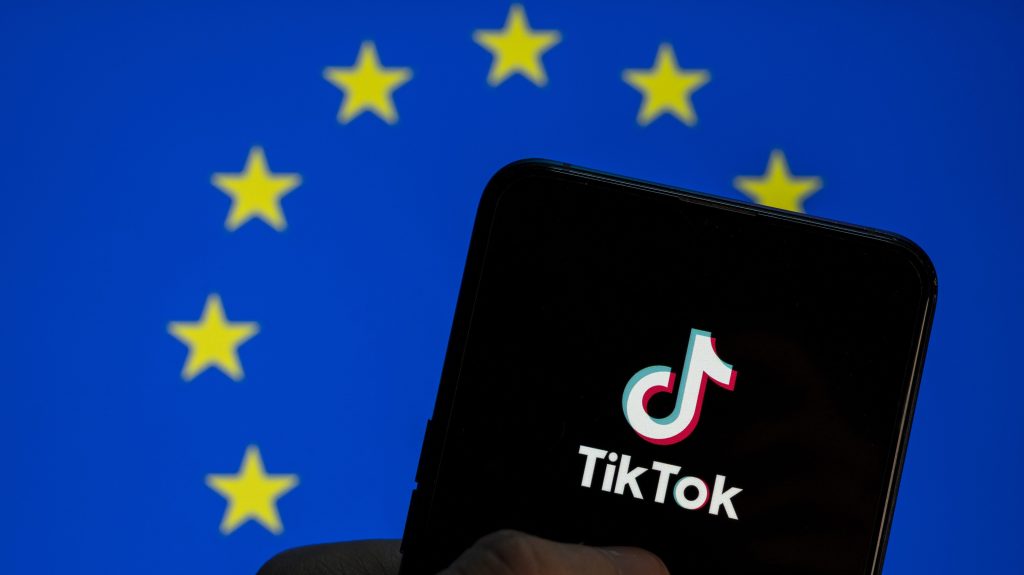Trending News
18 October, 2024
11.7°C New York

TikTok is introducing a data portability API to help it comply with new European regulations designed to rein in Big Tech’s market dominance through various obligations and restrictions.
The European Union (EU) assigned “gatekeeper” status to six tech companies last September, with TikTok parent ByteDance placed in the regulatory firing line alongside Alphabet, Amazon, Apple, Meta and Microsoft. While TikTok/ByteDance continues to contest the decision to give it gatekeeper status, arguing that it is actually a challenger rather than an incumbent, for now it has to comply with the various DMA obligations that come into force after March 6.
Data portability and interoperability constitutes a major part of the DMA regulations, and tech companies have been bolstering their efforts on this front for several years in preparation. TikTok, for its part, already allowed users to download a copy of their posts and request a copy of their data for the purposes of using it on other platforms — but this was a static process that didn’t account for the fact that data is constantly changing and refreshing.
Thus the data portability API goes some way toward addressing that limitation, allowing third-party developers to build conduits for data to travel from TikTok to their own apps — if the user authorizes this. This can be configured for recurring or one-time transfers, and is designed to counter the traditional “walled garden” approach that social networks of yore are famed for.
Through the API, developers can request access to “all available data,” or individual categories, including TikTok posts and profile data, activity and direct messages (DMs).
The data portability API is available to applicants globally, but the developer must be able to demonstrate a “well-defined use case” before they will be approved. Moreover, the API is only applicable to users in the European Economic Area (EEA), so the developer must be able to distinguish their market segments regionally.
On top of that, TikTok said that it’s also refreshing its main “download your data” tool, so users can now choose which categories of data they wish to download (e.g. DMs or posts). This update will land first in the EEA, but it will be made available globally in the future.

Just about everyone is trying to get a piece of the generative AI action these days. While the majority of the focus remains on the model vendors like OpenAI, Anthropic and Cohere, or the bigger companies like Microsoft, Meta, Google and Amazon, there are in fact, a lot of startups trying to attack the generative AI problem in a variety of ways.
Fireworks.ai is one such startup. While lacking the brand name recognition of some of these other players, it boasts the largest open source model API with over 12,000 users, per the company. That kind of open source traction tends to attract investor attention, and the company has raised $25 million so far.
Fireworks co-founder and CEO Lin Qiao points out that her company isn’t training foundation models from scratch, but rather helping fine tune other models to the particular needs of a business. “It can be either off the shelf, open source models or the models we tune or the models our customer can tune by themselves. All three varieties can be served through our inference engine API,” Qiao told TechCrunch.
Being an API, developers can plug it into their application, bring their model of choice trained on their data, and add generative AI capabilities like asking questions very quickly. Qiao says it’s fast, efficient and produces high-quality results.
Another advantage of Firework’s approach is that it allows companies to experiment with multiple models, something that’s important in a fast-changing market. “Our philosophy here is we want to empower users to iterate and experiment with multiple models and have effective tools to infuse their data into multiple models and test with a product,” she said.
Perhaps even more importantly, they keep costs down by limiting the model size to between 7 billion and 13 billion parameters, compared with over 1 trillion parameters in ChatGPT4. While that limits the universe of words the large language model can understand, it enables developers to focus on much smaller, focused data sets designed to work with more limited business use cases.
Qiao is uniquely qualified to build such a system having previously worked at Meta, leading the AI platform development team with a goal of building a fast, scalable development engine to power AI across all of Meta’s products and services. She was able to take this knowledge from working at Meta and create an API-based tool that puts that kind of power in reach of any company without requiring the level of engineering resources of a company the size of Meta.
The company raised $25 million in 2022 led by Benchmark, with participation from Sequoia Capital and unnamed angel investors.